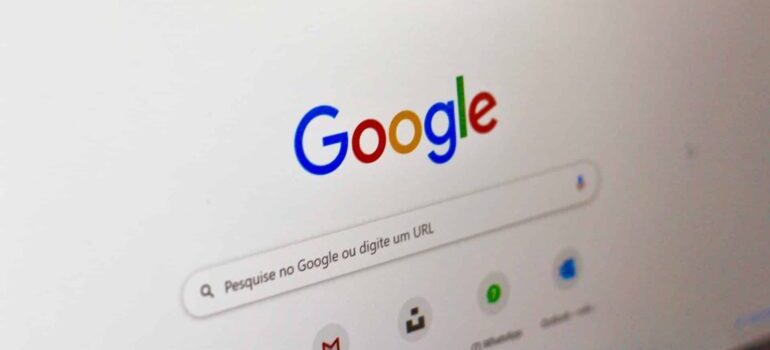In today’s era of rapid technological advances, the ability to recognize fraudulent websites is crucial. Your personal and professional identity, money, and email/social media accounts are at risk online if you don’t know how to identify and avoid bogus websites. This is why, no matter if you are doing online shopping or doing SEO for moving companies, it’s important to be cautious. This is why today we will discuss 9 ways to identify fake websites.
1. Keep an eye out for the padlock icon

A padlock icon may reassure you that the site is secure, but you shouldn’t rely on it alone. You can verify the presence or absence of a site’s “security certificate” in all modern web browsers including Safari, Firefox, and Google Chrome. This certificate, sometimes called an SSL certificate, guarantees that your data will reach the site safely and securely. Finding evidence of a padlock next to the URL in the address bar indicates that the site in question has a legitimate security certificate.
2. Search for HTTPS
In order to ensure that a website is secure, you should check for the prefix “https://” at the beginning of the URL. When you see the letters “https://” in a web address, you know that the information being sent between your computer and the server is encrypted. Not all websites with an “http://” (no “S”) prefix are fraudulent, however, this is something to keep an eye out for. Put simply, you should never input sensitive information onto a site that doesn’t begin with HTTP. That being said, doing research on keywords for moving company, you will most likely come across a few fake websites, therefore, don’t forget to look at the address bar.
3. Take a closer look at the domain name
Scammers often choose domain names that sound similar to reputable ones, such as Yah00.com or Amaz0n.net. If you are referred to a website from another page, you should always double-check the URL. This way you’ll be able to ensure that you have arrived at the correct domain. The vast majority of email-to-website scams use a similar technique. Therefore, before clicking on a link in an email purportedly from a reliable sender, be sure to verify the domain.
4. Verify the domain’s age
Fake websites don’t usually last long, but they can cause a lot of damage in the time they do exist. This is why a good way to figure out if a website is fake or not is to check its age. There are tools out there that can tell you just how long a website has been live. Therefore, if you are suspicious about a website, make sure to look at how long it has existed. If the website is claiming to be an authority on something even though it has existed for a few days, it is most likely a scam. The Wayback Machine of the Internet Archive is a good option for exploring the website’s history and discovering whether or not it has served more than one purpose.
5. Keep an eye out for reviews

If you want to improve your moving company’s online presence, you probably understand the importance of backlinks for movers. However, you may not be aware of how important the credibility of the website you use for backlinking is as well. The best way to figure out if the websites you wish to backlink to are legitimate is to look for reviews. That being said, scammers often use bogus reviews in an attempt to bolster the credibility of their online operations. The other side of this is that actual consumers (who may have been cheated) may also leave reviews alerting you about their experiences.
Check both on- and off-site evaluations for any indication of fraud, non-delivery, or even identity theft. While reading customer feedback, pay attention to any suspicious details. Con artists will frequently use automated software to mimic the appearance of genuine reviews on review sites.
6. Bad spelling and grammar
Con artists are often pressed for time, so they won’t bother spending hours perfecting their websites. This often leads to sloppy mistakes that legitimate websites would never allow themselves. One of the most obvious elements of this sloppiness is bad spelling and grammar. Companies that produce a lot have teams of writers and editors to catch and correct any typos or grammatical issues, while scammers don’t.
7. Web page design that isn’t up to par

For the same reason as the last point, the design quality of most fake websites is often poor. Fake websites will often have low-resolution or fuzzy graphics. Furthermore, these websites are often sluggish and difficult to browse. They also lack critical information such as the “About me” page. Scammers often use false addresses and phone numbers (or none at all). If you can’t find basic info about a company on its website, they are most likely a scam.
8. Use a website checker
If you are unsure whether or not a website is secure, you may use a website checker to find out. You can find out whether a website has encryption, how thorough their checks are, and if there are any security holes by running a secure website check.
9. A dose of skepticism is recommended
Keeping your guard up whenever you visit a new website is one of the ways to identify fake websites. It may seem excessive but with the stakes so high, you can never be too careful. We suggest utilizing the following tools if you have visited a suspicious website or if you want to be vigilant about safeguarding your personal information:
- Password protection software to prevent unauthorized access to sensitive data.
- Identity protection service for securing your personal information.
- Credit monitoring service to secure your financial future.
Each of these services offers another way to keep an eye on your personal and financial information. And with that, we conclude our list of the nine ways to identify fake websites.






